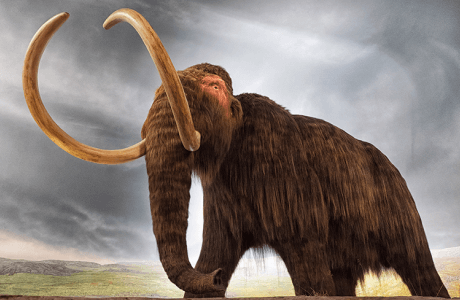Woolly mammoth

If you stepped outside 20,000 years ago, you’d probably need a winter coat, even in summer. That’s because Earth was experiencing an ice age—a time when sheets of ice covered large parts of North America, Europe, and Asia. It was also a time when humans lived alongside a now-extinct group of elephants called mammoths.
Ancient elephant
One species, called woolly mammoths, roamed the cold tundra of Europe, Asia, and North America from about 300,000 years ago up until about 10,000 years ago. (But the last known group of woolly mammoths survived until about 1650 B.C.—that’s over a thousand years after the Pyramids at Giza were built!)
These animals grazed on plants, using their 15-foot-long tusks to dig under snow for food like shrubs and grasses. Like today’s elephants, woolly mammoths likely gave birth to one calf at a time, and the females and their young roamed in herds of about 15 individuals. Male mammoths would leave the herd at about age 10.
Snow ready
Woolly mammoths were probably about the size of African elephants, around 13 feet tall. But woolly mammoths had much smaller ears, which kept them from losing body heat. They were also covered in two layers of fur—the shaggy outer layer could be 20 inches long and helped them stay toasty in temperatures as low as minus 58°F. Woolly mammoths also had a lump on their back, which scientists think were fat stores that provided energy when food was scarce, sort of like a camel’s hump.
Scientists aren’t sure exactly why woolly mammoths went extinct: Some think that humans hunted too many of them, and others believe that they couldn’t survive Earth’s naturally warming climate. Or, it could’ve been a combination of both.
